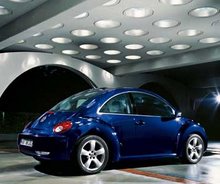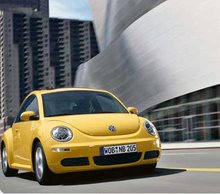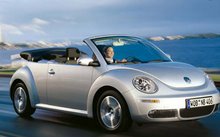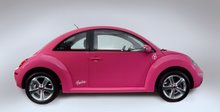 Other countries produced Beetles from CKD (complete knockdown kits): Thailand, Indonesia, South Africa, Australia, and Nigeria have assembled Beetles under license from VW (source: Volkswagens of the World).
Other countries produced Beetles from CKD (complete knockdown kits): Thailand, Indonesia, South Africa, Australia, and Nigeria have assembled Beetles under license from VW (source: Volkswagens of the World).Beetles produced in Mexico and Brazil had several differences:
* The Brazilian version retained the 1958-1964 body style (Europe and U.S. version) with the thick door pillars and small quarter glass; this body style was also produced in Mexico until 1970. Brazilian CKD kits (complete knockdown) were shipped to Nigeria between 1975-1987 where Beetles were locally produced. The Brazilian-produced version have been sold in neighboring South American nations bordering Brazil, including Argentina and Peru.
* The Brazilian VW Bug have four different sized engines: 1200cc, 1300cc, 1500cc and, finally, 1600cc. In the 70's Volkswagen made the SP-2 (derived from the VW Bug chassis and powertrain) that used an air-cooled VW engine with 1700cc. In Brazil the VW Bug never received electronic fuel injection, but retained single or double carburetion throughout its life.
* The production of the air-cooled engine finally ended in 2006, after more than 60 years. It was last used in the Brazilian version of the VW Bus, called the "Kombi", and was replaced by a 1.4-litre water-cooled engine with a front-mounted cooling system.
* Beetles produced in Mexico (since 1964) have the larger door and quarter glass between 1971 - 2003 with the 1958 vintage back glass until the mid-1970s. This version, after the mid-1970s, saw little change with the incorporation of electronic ignition in 1988, an anti-theft alarm system in 1990, and electronic fuel injection, hydraulic valve lifters and a spin-on oil filter in 1993. The front turn signals were commonly located in the bumper instead of the Beetle's traditional placement on top of the front fenders.
Independent importers continued to supply several major countries, including Germany, France, and the UK until the end of production in 2003. Devoted fans of the car even discovered a way to circumvent United States safety regulations by placing more recently manufactured Mexican Beetles on the floorpans of earlier, US-registered cars between 1998 - 2003. The Mexican Beetle (along with its Brazilian counterpart) was on the US DOT's (Department of Transportation) hot list of gray market imports after 1978 since the vehicle did not meet safety regulations. A U.S. citizen who drives a Mexican Beetle across the US-Mexico border into the US is likely to end up with the vehicle seized by the US government.
In the Southwest United States (Arizona, California, New Mexico, Texas) - Mexican Beetles (and some Brazilian T2c Transporters) are a common sight in San Antonio and Houston since Mexican nationals can legally operate the vehicle in the United States, provided the cars remain registered in Mexico.
The end of production in Mexico can be attributed primarily to Mexican political measures: the Beetles no longer met emissions standards for Mexico City, in which the ubiquitous Beetles were used as affordable taxicabs; and the government outlawed their use as taxicabs because of rising crime rates, requiring only four-door vehicles be used. In addition, Volkswagen (now Germany's largest automaker) has been attempting to cultivate a more upscale, premium brand image, and the humble Beetle, with its US$7000 base price, clashed with this identity, as seen in the Touareg and Phaeton luxury vehicles. Finally, consumers had begun showing a preference for more modern cars such as the Volkswagen Pointer and Volkswagen Lupo.




No comments:
Post a Comment